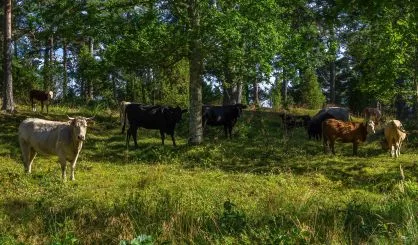
Michigan farmers and others are growing crops, trees and livestock on the same land to help battle climate change.
The technique, known as silvopasture, helps collect the carbon responsible for global warming. Agriculture agents say silvopasture is the practice of integrating trees, forage and the grazing of domesticated animals in a mutually beneficial way.
Monica Jean, a crop educator with the Michigan State University Extension, said her office works with farmers around the state to optimize their systems through an environmental lens.
“We work with a little bit different stakeholders,” she said, “but because we cover the three pillars of silvopasture – trees, forage and livestock – that’s how we work with farmers on implementation, or site selection.”
Jean said states with a large amount of forested land – such as Michigan, Kentucky, New York and Oregon – are prime places for silvopasture, as many grazing fields are in close proximity to woodlands.
While it’s relatively new to American farms, silvopasture is actually one of the oldest land-use practices in human history, dating back centuries to Europe. Brett Chedzoy, regional forester for the Cornell University Cooperative Extension, said the process can work on small, wooded plots and large operations alike.
“The beauty of silvopasturing, compared to really any of the other agro-forestry systems,” he said, “is that it’s not only scalable, but can be implemented at a much larger scale.”
Chedzoy, who has consulted with the Michigan State Extension system, said he warns farmers that the process can be labor-intensive and requires more management skills.
“There’s a couple of key things to make silvopasturing work,” he said. “You have to manage the trees well, but you also have to manage the grazing well.”
People interested in silvopasture should contact their state’s agricultural extension service.








